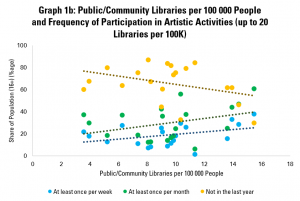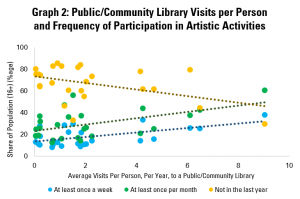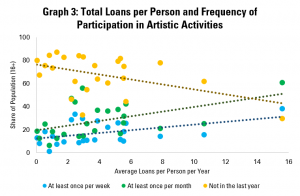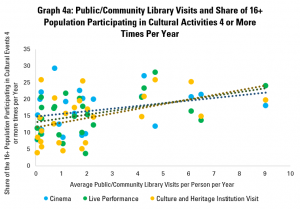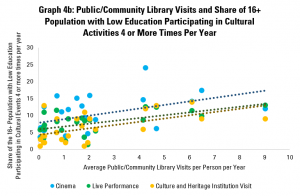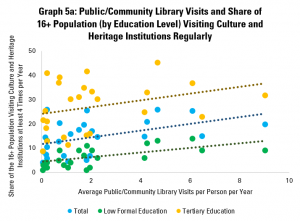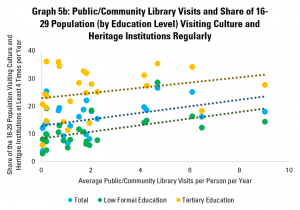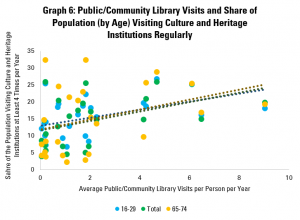On 19 December, the UN General Assembly approved a resolution looking at the relationship between culture and sustainable development. Such resolutions are prepared every two years, but nonetheless this represents a useful high-level reference point for work on the place of culture in delivering the 2030 Agenda.
In the first of two blogs (see the second here), we take a look at eight key aspects of this text that are helpful for libraries, and all those looking to ensure a stronger recognition of culture in development agendas, as a means of ensuring better support and integration into policymaking. In the second, we will look back at how the UN’s language around culture and sustainable development has evolved over time.
1) Culture is recognised both as an enabler of other goals, and as having intrinsic value: there is a legitimate discussion both about the responsibility of the cultural sector to contribute to wider development goals, while not instrumentalising it to achieve other goals (something that could be harmful for artistic freedoms). The Resolution therefore underlines these two aspects – that culture is an enabler and driver, but is also a value in itself.
2) There is still work to be done about how we define culture: linked to the first point, the Resolution doesn’t attempt to offer clarification about the ‘boundaries’ of culture, and in particular the relationship between the traditional cultural sector (artists and other creators and institutions, including libraries) and wider cultural concerns (traditions, practices and beliefs). While we would argue that the two are linked – writers and artists do have a role in shaping wider culture – it would help if this were made clearer.
3) Realising the potential of culture to support sustainable development matters for success elsewhere: the Resolution contains a range of reference to work in other areas – not least environment and equality – as well as explicit references to how culture impacts on biodiversity, education and consumption patterns. This underlines the argument that we cannot achieve our goals in these other areas without engaging and action on culture.
4) There are strong precedents for recognising the place of culture in development: the Resolution includes a long list of United Nations texts that underline the importance of culture in the context of wider development strategies. This makes it helpfully clear that there is precedent for taking culture seriously, and so a basis for asking for a stronger place for culture in future.
5) We need to continue to build the evidence framework: the Resolution notes the different targets in the current 2030 Agenda that reference culture, and the need not only to deliver on these, but to improve measurement. It is certainly the case that there is always need for more evidence, not just in order to strengthen the case for the role of culture, but also to help those in the culture sector maximise their positive impacts on wider development outcomes. A particular role is given to UNESCO in this space.
6) A clear call to give consideration to the rule of culture in 2030 Agenda implementation: while the text is not new, it is welcome that Member States decide to ‘give consideration, as appropriate, to the contribution of culture to sustainable development in the follow-up and review framework of the 2030 Agenda’, as well as recognising the potential to work through Voluntary National Reviews (VNRs) to achieve this. The Culture2030Goal campaign report underlines this potential, and our VNR Culture Checklist offers a practical tool for achieving this.
7) The particular role of local and regional governments: in referring to the need to give consideration to the role of culture, the Resolution highlights in particular how this can help achieve SDG 11 – Sustainable Cities and Communities. This is perhaps not a surprise, given the strong place of culture in the report on SDG11 in 2023 produced by UN Habitat, but also makes sense given that the role and potential of culture is perhaps clearest at the local level. Local and regional governments have certainly been leaders in working with and mobilising culture for development.
8) Specific calls on Member States: the Resolution makes a number of requests to governments, including to promote cultural diversity, to mainstream culture into policy making, to protect cultural rights (especially for women), to support intercultural dialogue, to build capacity in the sector, to preserve local knowledge, to safeguard institutions and collection, to find ways of funding culture, and to explore issues of repatriation and access.
9) Relevance to the Culture2030Goal campaign zero draft: linked to the previous point, it is worth noting that all of the sub-themes highlighted in the Culture2030Goal campaign’s zero draft of a culture goal also feature in the Resolution, ranging from specific support to creators, cultural rights, strengthening institutions, and integrating culture into wider policy-making. This is a welcome indication of the relevance of the suggested targets.
10) A call to integrate culture into the work of UN country teams: even outside of countries undertaking Voluntary National Reviews next year, the Resolution makes clear that there is scope for mobilisation everywhere where the UN is active. It calls for UN country teams to ‘further integrate and mainstream culture into their programming exercises, in particular United Nations Sustainable Development Cooperation Frameworks’. This is a useful reference for library associations and other organisations and institutions involved in Culture2030Goal work to reach out, and explore how to deliver, already, on the potential of culture to support development through better integration into wider development activities.

